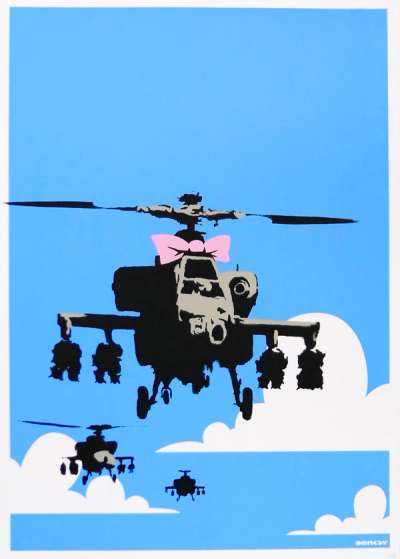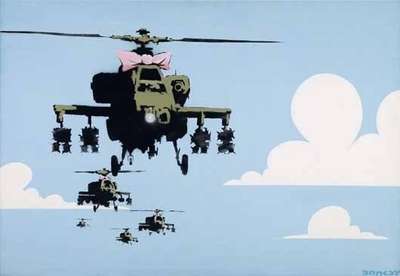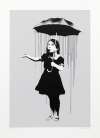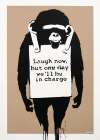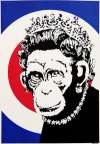Happy
Choppers
First seen as a street artwork in London in 2002, Banksy's Happy Choppers prints were released in two silkscreened editions in 2003. Adorning military-grade helicopters with pink bows, Banksy draws attention to the crisis of civilians, especially children, under attack.
Banksy Happy Choppers For sale
Happy Choppers Value (5 Years)
The Happy Choppers series by Banksy features both signed and unsigned editions, which diverge significantly in value. Signed examples consistently command premiums, with hammer prices reaching up to £470597. Across the series, 124 total auction sales have been recorded, with an average annual growth rate of -0.49%. For collectors, edition type plays a pivotal role in value potential within this series.
Happy Choppers Market value
Auction Results
| Artwork | Auction Date | Auction House | Return to Seller | Hammer Price | Buyer Paid |
|---|---|---|---|---|---|
 Happy Choppers Banksy Unsigned Print | 20 Nov 2025 | Bonhams New Bond Street | £9,350 | £11,000 | £14,000 |
 Happy Choppers Banksy Signed Print | 26 Mar 2024 | Christie's London | £25,500 | £30,000 | £40,000 |
 Happy Choppers Banksy Signed Spray Paint | 4 Oct 2018 | Sotheby's New York | £357,000 | £420,000 | £560,000 |
Sell Your Art
with Us
with Us
Join Our Network of Collectors. Buy, Sell and Track Demand
Meaning & Analysis
Banksy’s Happy Choppers screen print was released in 2003 as an edition of 750 pieces – just 150 signed prints and 600 unsigned prints.
Created for the artist’s exhibition Santa’s Ghetto, this Banksy print intended to draw attention to the Israel-Palestinian conflict and the poverty of the West Bank. Before being released as a screen print, Happy Choppers first appeared in 2002 as a sprayed mural in Central London at the Whitecross Street Market.
Executed in the artist’s recognisable stencil style, Happy Choppers depicts a squadron of armed military helicopters against a bright blue sky. With simple white clouds, the sky is stylised and flat. In stark contrast, the incoming ‘choppers’ are rendered in much greater detail, in dark colours and with graphic emphasis on their heavy, threatening weaponry, evoking a sense of imminent danger. ‘Chopper’ is the American slang for helicopter, a term that was popularised during the Korean War.
The composition showcases an association of typically contradictory elements. The lead ‘chopper’ flaunts a jarring, pink bow, juxtaposing the violence of warfare with the innocence of childhood. The bow adorning the otherwise accurate representation of the fighter helicopter mocks ideas of masculinity and militarism, whilst reinforcing their inherent menace. Happy Choppers is also an early example of Banksy's use of the helicopter motif, and he has revisited the symbol of military intervention multiple times throughout his career, making it a key part of his artistic identity.
It was re-used in his Crude Oil collection of paintings as Study for Happy Choppers, and figured on boards in the anti-war protests of 2003 in London, alongside other works such as Grin Reaper and Wrong War. Massive Attack and Blur actively supported and promoted these images during the march, which brought Banksy a lot of publicity.

